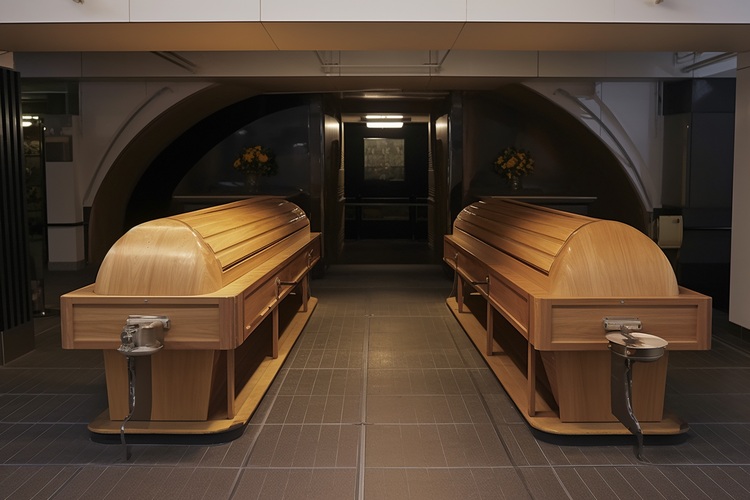Understanding the Cremation Process: Step-by-Step Overview
Cremation is a deeply personal choice, yet many people don’t fully understand what the process involves. From the moment a loved one is prepared for cremation to the final return of the ashes, each step is carried out with care, respect, and attention to detail. In this article, we walk you through the full process of modern cremation—from identification and preparation, to the cremation itself, and finally, the handling of remains. Whether you're planning ahead, coping with a loss, or simply curious, this transparent look at the cremation process may bring clarity and peace of mind. See how modern cremation works and what to expect at every stage.

When families choose cremation, understanding the complete process can provide comfort and clarity during a difficult time. Modern cremation facilities follow strict protocols to ensure dignity, respect, and proper handling throughout every stage. The entire procedure typically takes several days from start to finish, with each step carefully documented and regulated by UK authorities.
Identification and Authorization Procedures in Modern Cremation
The cremation process begins with proper identification and authorization procedures that form the legal foundation of the service. Funeral directors must obtain a cremation certificate from a medical referee, who reviews the cause of death and ensures all legal requirements are met. The deceased is identified using multiple methods, including identification tags that remain with the body throughout the entire process. Family members or appointed representatives must provide written authorization, and in some cases, a second medical examination may be required. These procedures protect both families and cremation facilities by ensuring complete accuracy and legal compliance.
How Simple Cremation Services Are Carried Out Step by Step
Simple cremation services follow a streamlined approach while maintaining all necessary protocols. After authorization is complete, the deceased is prepared for cremation, which includes removing any medical devices, jewelry, or items that cannot be cremated safely. The body is placed in a suitable cremation container, typically made of cardboard or simple wood. A unique identification system tracks the deceased throughout the process, ensuring complete accuracy. The cremation chamber is prepared and heated to the appropriate temperature, usually between 760-1150 degrees Celsius. This systematic approach ensures efficiency while respecting the dignity of the deceased and the wishes of the family.
What Happens During the Cremation Itself: A Detailed Explanation
The actual cremation process takes place in a specially designed chamber called a cremator or retort. The cremation container and deceased are placed into the primary chamber, where intense heat reduces the body to bone fragments and ash over a period of 1-3 hours, depending on various factors including body size. Modern cremators use secondary chambers to ensure complete combustion and minimize emissions. Throughout the process, the unique identification system ensures proper tracking. Temperature and timing are carefully monitored by trained operators who follow strict guidelines. The process is designed to be respectful, efficient, and environmentally responsible, with modern facilities incorporating advanced filtration systems to reduce environmental impact.
Understanding How Ashes Are Collected and Returned to the Family
After cremation is complete, the remaining bone fragments undergo a cooling period before processing. Any metal items, such as surgical implants or dental work, are carefully removed and disposed of according to regulations. The bone fragments are then processed into a fine, consistent powder using specialized equipment. The ashes are placed in a temporary container or an urn chosen by the family, with the identification tag ensuring complete accuracy. Most crematoriums return ashes within 2-5 working days, though this can vary depending on the facility and any special requests. Families receive a certificate of cremation along with the ashes, providing official documentation of the process.
Exploring Cremation Options in the United Kingdom and Your City
The United Kingdom offers various cremation options to meet different family preferences and budgets. Direct cremation provides a simple, unattended service without a funeral ceremony, while traditional cremation includes a service at the crematorium chapel. Many facilities offer additional services such as live streaming for distant relatives, memorial books, and various urn options. Environmental considerations have led to the development of more eco-friendly practices, including bio-cremation and woodland burial grounds for ashes. Local authorities across England, Scotland, Wales, and Northern Ireland maintain crematoriums that serve their communities, with most cities having multiple facilities to choose from.
| Service Type | Provider Examples | Cost Estimation |
|---|---|---|
| Direct Cremation | Co-op Funeralcare, Dignity | £1,200-£1,800 |
| Traditional Cremation | Local Council Facilities | £2,500-£4,000 |
| Premium Services | Private Crematoriums | £3,500-£6,000+ |
Prices, rates, or cost estimates mentioned in this article are based on the latest available information but may change over time. Independent research is advised before making financial decisions.
The cremation process represents a carefully regulated and respectful method of handling the deceased that serves millions of families across the United Kingdom each year. Understanding each step helps families make informed decisions and provides reassurance during difficult times. Modern facilities combine traditional respect with contemporary technology to ensure dignity, accuracy, and environmental responsibility throughout the entire process.




